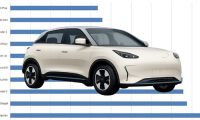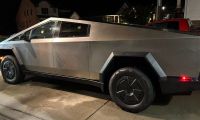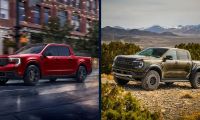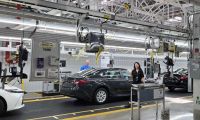The newest US electric car entry, the BMW i3, is beginning to give us some insight into the evolution of the greenest of green cars. Modern electric vehicles (EVs) are now in their third full calendar year of sales in the US. Although this is a relatively short timeline, the trend so far is that “pure EVs” which are called BEVs, as in battery electric vehicles, are not gaining in popularity compared to EVs which can have a gasoline range extender. The BMW i3’s sales have followed this trend.
Green Cars Started As Gasoline Cars
Green cars like the Prius arrived a decade before the modern EVs and the public began to get used to the idea of having an electric motor and a battery to help move their car. The easy assumption would be that as battery powered "pure" EVs matured more and more green buyers would choose them. The i3 helps to confirm that people are not overwhelmingly choosing BEVs, but rather plug-in hybrid electric vehicles (PHEVs) as often or more often.
Pure Electrics Not Gaining
We are finding it very interesting that the battery electric vehicle is not way ahead in green car sales by now. Rather than pulling ahead, the battery-only electric vehicles, BEVs, are actually dropping back. Despite the constant headlines about EVs and their tremendous accomplishments, all forms of electric vehicles combined are not growing as a percentage of the US car market. Last year about 100,000 of these were sold. For the first six months of 2014 about 54,000 were sold. During that time the overall car market grew too. Dive deep into the numbers all you like, the truth is all forms of cars with plugs are a tiny percentage of the US market and they are not gaining significant ground – yet.
The Coming Sales Surge
We are trying to guess what type will prove the most popular when the expected sales surge finally does come, and so we have examined the tea leaves. The i3 is telling us that the “purely electric” cars are not outselling those that increase their range with the antagonist in the EV narrative - fossil fuels.
Second Time EV Buyers Not Choosing Pure Electrics
We are seeing that even those customers who have already “walked the walk” and bought a green car in the past are not breaking hard for the BEVs. One would assume they would, but the realities of price, range, and the fact that the BEVs for sale in some areas are very limited, seem to have conspired to push the PHEVs, with their on-board reminders of the evils of gasoline, to the forefront of EV sales.
Why EV Buyers Choose Models With Gas Engines
Why this is happening is debatable. Some folks may be pragmatists and realize that an on-board range extender just makes sense for them. Others may indeed be first-time EV buyers who are testing the waters and coming from internal combustion engine cars. However, we have polled i3 buyers and found that roughly 70% owned a green car prior to their purchase of an i3. For now, the i3 early adopters are in many cases on their second EV. Despite the fact that the early buyers of the i3 are largely made up of the greenest of the green car demographic, and despite their familiarity with EVs, the i3 is splitting roughly 50-50 between the BEV version (less expensive) and the version with a gas generator on board, called the Rex (more expensive). Even with the price penalty, reduced government perks like restricted access to the HOV lane, and lower subsidies, the newest electric car is often selling with a fossil fuel burning engine inside its trunk where the spare tire would be if it had one.
Prior to the Nissan Leaf and Chevy Volt, the greenest car in the US market was the Toyota Prius hybrid. It could be argued that it still is the greenest car, but I don’t want to incite a riot, so let’s not go there. Once the battery electric vehicles, like the Leaf which can only run on electricity, joined the green car fun three choices began to emerge. First, the classic hybrids like a normal Prius. Second, what we call Plug-in Hybrid Electric Vehicles (PHEVs) and Extended Range Electric Vehicles (EREVs) like the Chevy Volt and Plug-in Prius. The third choice being the new “purely-electric” BEVs. Here is what the sale picture looks like over the past 18 months.
The Green Car Sales Rate:
Hybrids – 232,000 YTD Down about 5% vs 2013 total (not vs 1st half)
PHEVs with a gas range extender of any type –29,000 – up about 17% over 2013
Pure EVs, BEVS, - 26,000 – up about 4% over 2013 total.
2013 BMW i3 REx vs. BEV sales Numbers
In our own poll of 32 i3 owners we found an exact 50-50 split. A recent analysis by George Betak, i3 enthusiast and EV writer, also found a 50-50 split when he analyzed all 1800 of the i3s built so far for the US market. Some sources have the actual Rex sales to customers ahead by about a 3:2 ratio. Regardless of which source we look at, the trend is clear. BMW’s newest car is following the green car trend in sales, which is that the pure electric cars are not outselling cars with on-board gasoline powered range extenders.













Comments
I will like to order Mirrors
Permalink
I will like to order Mirrors